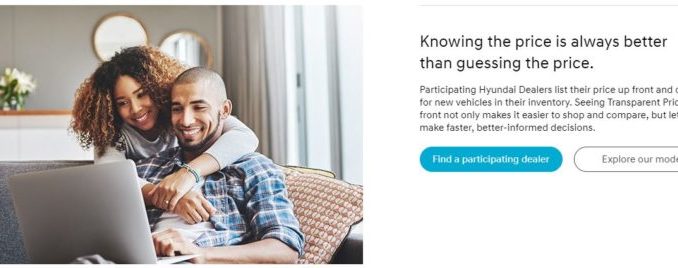
Last August, Brian Solis, Principal Analyst at Altimeter, spoke with Dean Evans, the CMO of Hyundai Motor America to discuss how rapidly evolving customer behavior has motivated Hyundai to change their approach to selling cars.
The interview with Evans was conducted for a study titled, Digital Experience Innovators: How Leading CMOs and DMOs are Modernizing Experiences and Brands for Digital-First Customers. The study reveals that top brands like Hyundai are investing heavily in technology aimed at modernizing the customer journey.
The evolution of customer behavior
Source: Hyundai.com
The traditional automotive sales model involves the customer visiting the dealer and negotiating around price points that they’re not fully aware of, but this model is changing based on the availability of information that informs the customer journey. Solis asked how this has affected Hyundai’s approach to reaching people at critical moments during the buying cycle.
“We’re getting good at understanding in-market buying intent which is tells us we need to spend more of our media dollars putting our value proposition in front of people that are shopping,” explains Evans. “As audience identification gets better, we get better at reaching people at the right time.”
Hyundai is reinventing the automotive buying model by making sure that crucial information such as price is available to customers up front on their website and elsewhere. Consumers can now shop at websites like TrueCar and Cars.com to get an idea of what is a fair price, essentially skipping the initial visit to the dealer.
Simplifying the shopping experience
Hyundai has a product called Shopper Assurance, which enables shoppers to get transparent pricing, remotely schedule a test drive, purchase a car from any device and even exchange a vehicle within three days if they’re unhappy with it.
Source: Hyundai.com
“Shopper Assurance is a better retail experience for car buyers. It offers transaction prices up front, a test drive, a more seamless purchasing experience and a money-back guarantee,” Says Evans. “We’re trying to walk away from immediately pushing a car or feature or price incentive to an in-market audience and instead offer a better retail experience as the value proposition.”
Hyundai has added ecommerce layers to all their dealer websites so consumers can do more pre-shopping up front. They can see what their credit score is, understand lease and buying options and do what traditionally took hours in the showroom with a salesperson. Now when a customer enters the showroom, they have the information packaged for them and they can get right to the most important part of the dealership experience—the test-drive
The Shopper Assurance program is truly customer centered and offers a money-back guarantee, something unprecedented in the auto industry.
Getting executive buy-in
Source: Hyundai.com
Solis questioned Evans about how he was able to convince Hyundai executives to introduce these new shopper programs in such an established industry.
“Some of the ways that we convinced stakeholders to test this process was through customer surveying,” explains Evans. “We brought everyone to the table and said we don’t have anything to lose by merging what we think is the best of both worlds—customers and salespeople. We have technology tools that can help the customer along the way and a brand that can support them.”
Once Hyundai launched this approach in pilot markets, they surveyed customers who said it was a better automotive retail buying experience than they’d had before. They were getting scores of 75 percent or more with customers saying it was the best experience they’ve ever had. “The data showed that consumers were picking experience over make and model.
“This is the best competitive advantage possible,” Says Evans, “because the features and technology across today’s automotive brands are very similar, so what differentiates brands is the retail experience. It takes a long time at a company like Hyundai to convince shareholders and stakeholders that this is something we need to do. Customers and customer data helped push this whole idea through the system.”
Marketing as the revenue driver
Per Solis, research shows that for similar products, customers will pay upwards of 25% percent more for a product if they know they’ll get a better experience throughout the purchasing journey and in the product lifecycle. When asked how marketing can help deliver great customer experience as well as act as the a driver for business growth, Evans indicated that it was all about data.
“Modern Chief Marketing Officers are really Chief Revenue Officers,” Evans explained. “Marketing has gone from a creative exercise to being extremely data-driven and performance-based.”
In today’s data-driven environment, a click equals a lead which equals a sale. Marketing has come full circle. Hyundai leans in on this phenomenon with their corporate parent in Korea, with dealers, and with all relevant stakeholders including the CFO. The more they invest in marketing up front, the more sales they get out unlike the old days where a TV spot may have worked about half the time (or less).
“In Automotive, it used to be the sales chief was the revenue generator,” says Evans. “We’re finding that we can affect conversion by getting our retailers to close those leads better, but it takes the marketing department to get a customer into the dealership to begin with.”
The post How customer behavior is helping Hyundai change the buying experience appeared first on ClickZ.
Source: ClickZ
Link: How customer behavior is helping Hyundai change the buying experience



Leave a Reply